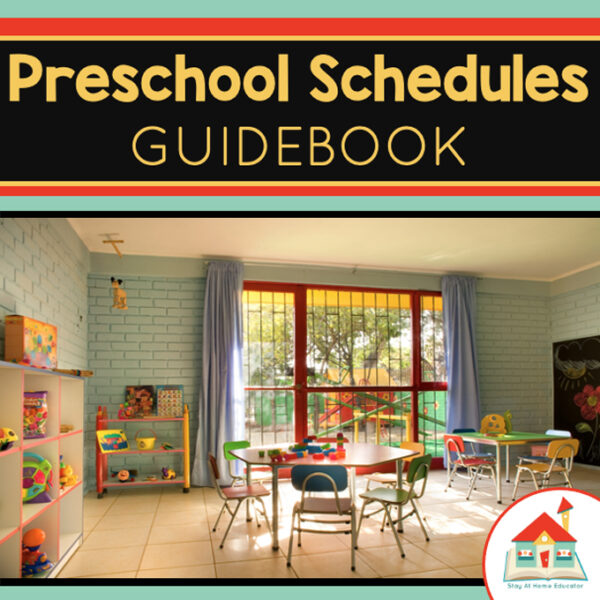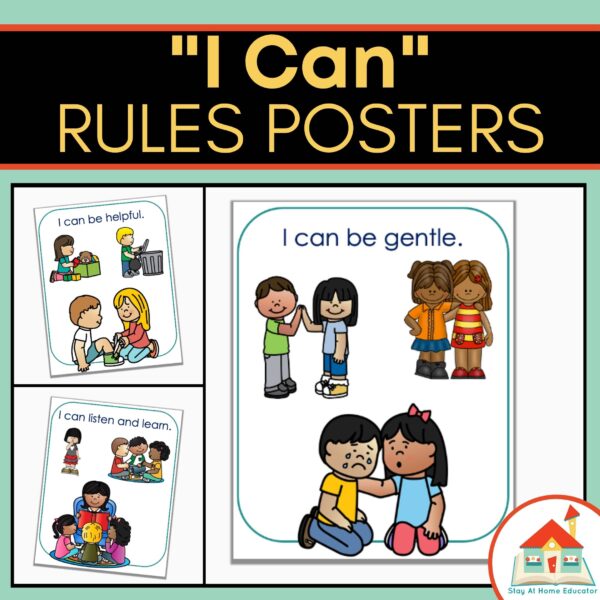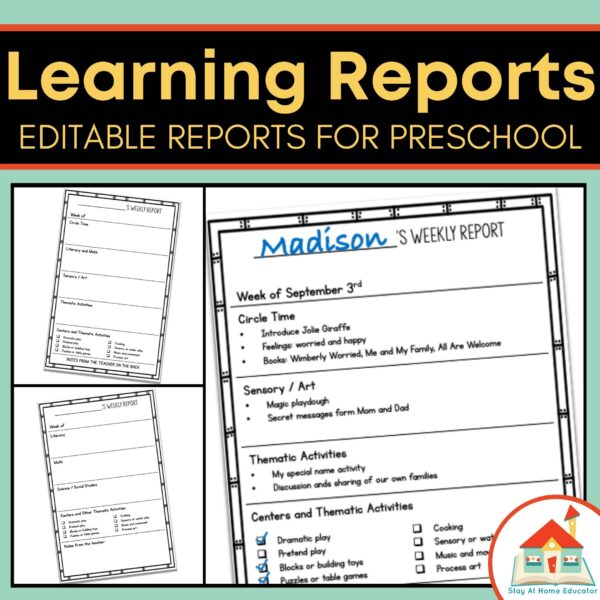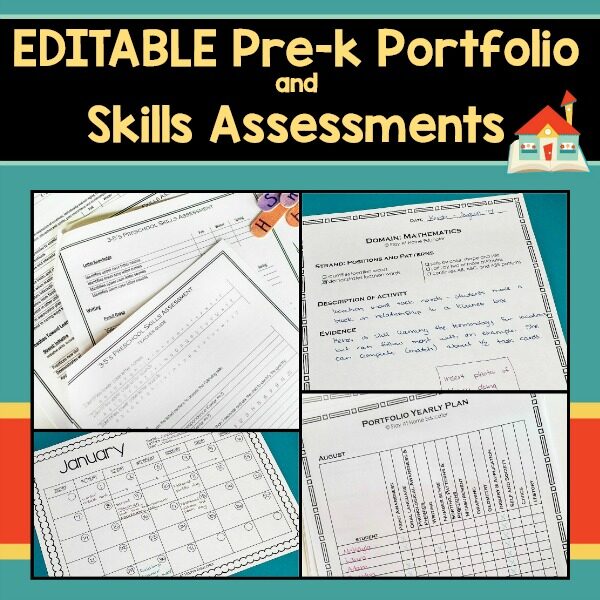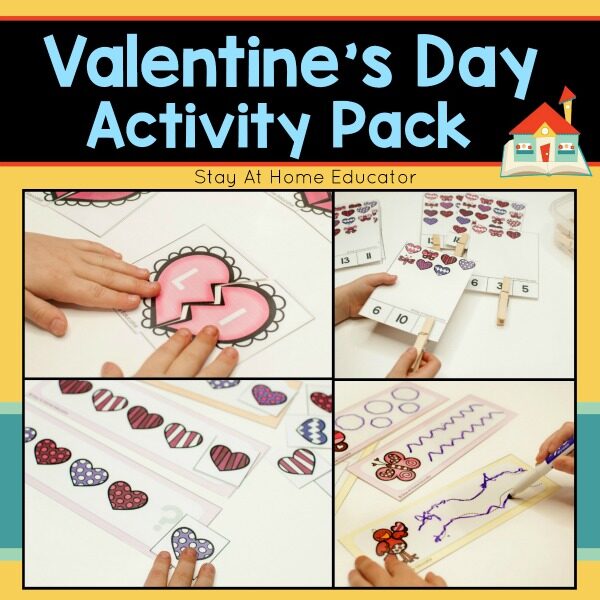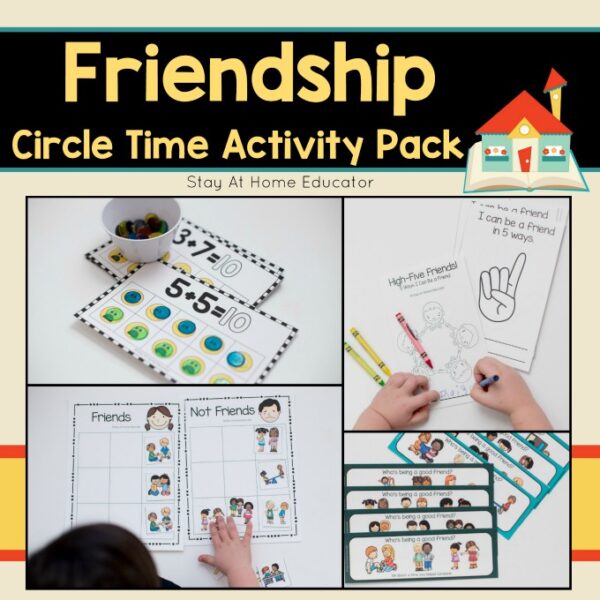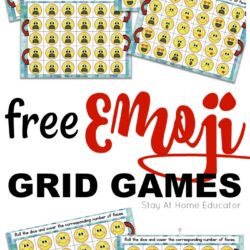Preschool math encompasses a wide range of skills, with number identification and counting being some of the most foundational. See how these free Emoji Grid Games can be used as feelings and emotions activities for preschoolers while teaching number sense.
They are just the right thing to add to your friendship preschool theme this year.
Social Emotional Activities for Preschoolers Using Emoji Games
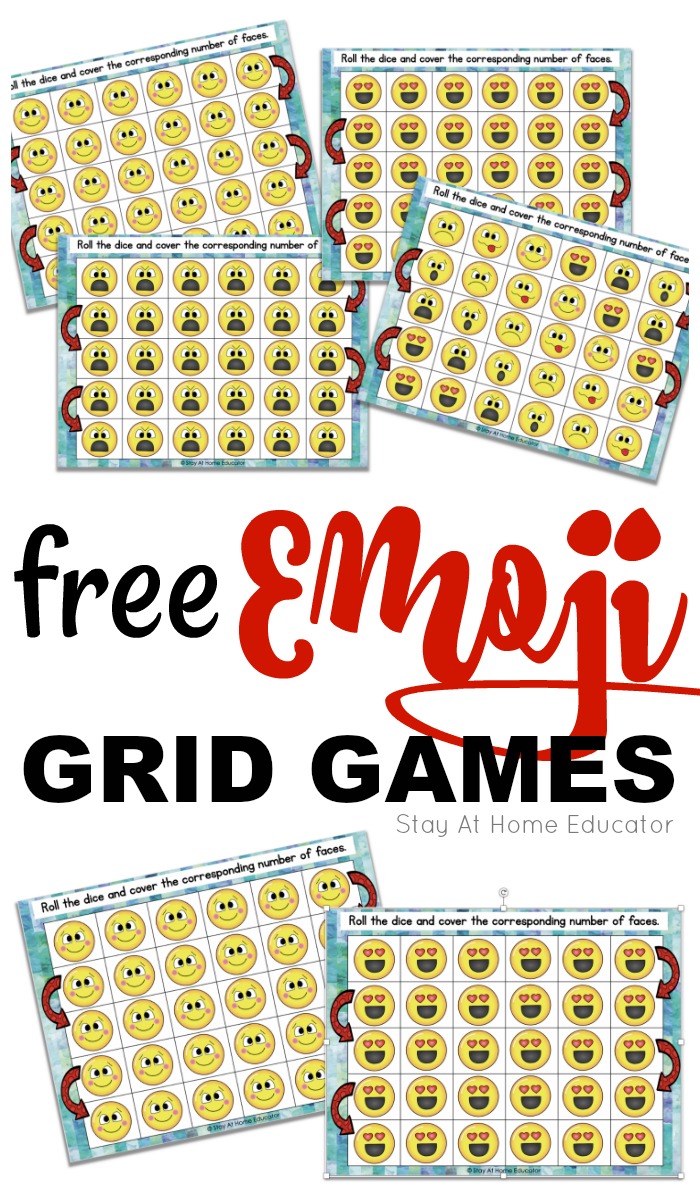
I have to admit, I don’t really understand the whole emoji craze. Maybe that dates me a bit.
I’m sure from that comment alone you can glean that I may or may not have purchased my very first cell phone while I was working on my Master’s degree. And the phone was free with my cell phone plan…which required a two-year contract.
There was no such thing as emojis back then because you have to use a numeric keypad to do all your texting…and each text cost you an additional 50¢, which quickly added up!
This is not to say that I don’t use emojis ever. I do.
I send a smiley face in a text or email every now and again, or when the dog dug up all the carrot seedlings in my garden I sent the angry swearing emoji to my husband in a text message. My email subscribers see the occasional emoji in the subject line of the email.
But the thing I have learned about emojis is that they can be a great addition to emotions activities for preschoolers. I mean, that’s how they started, right?
FAQ About Teaching Feelings and Emotions to Preschoolers
Young children learn best through hands-on play and engaging activities. Use food or playdough to make various faces that depict emotions. Or play a matching emotion game and try to mimic the faces as you play. Songs and videos are a great way to talk about why we feel certain emotions and which emotions make us feel good and which ones make us feel not so great.
Teaching young children about emotions and feelings helps them to navigate these strong emotions and assures them that these feelings are normal and natural. Teaching children coping techniques and strategies for their big emotions helps guide and support them and builds empathetic and caring kids, who turn into, empathetic and caring adults. Plus, it’s essential to let children know that it’s important to express their feelings and that an adult will help them sort through their emotions.
There are so many wonderful and appropriate activities for teaching social-emotional skills such as puppets, cooperative games, books, and music. Reading stories together about emotions and conflict helps children apply some strategies in their own friendships. Spending quality time together can also help to fill up their need for attention and allow children to feel loved and cared for.
Related Reading
And I would be remiss if I didn’t mention that my Learn At Home Preschool Lesson Plans include two weekly social-emotional activities with each theme.
Emojis Have a Place in Preschool
While I may be a novice emoji-user, my kids can “write out” entire sentences using only emojis!
Preschoolers love emojis! I had to think of a way to use this to my advantage.
Enter: Emoji Grid Games.
These grid games are inviting because they feature emojis–which every preschooler loves–and they teach loads of counting and even some literacy skills, too. (That’s right. I said literacy skills. I’ll explain below.)
And, of course, they can also be used as emotions activities for preschoolers as children identify the facial expression on each one, making teaching emojis and learning about emotions fun.
Related Reading
Emoji Grid Games for Preschool Math
These emoji grid games are not limited to teaching number identification and counting; they can also be used to teach literacy skills. You can add them to your friendship theme in preschool, or use them to teach emotions in your All About Me theme.
Materials
- emojis grid game printable
- counting manipulatives
- 1-3 or 1-6 dice (depending on the skill level of your preschooler)
The Set-Up
The set-up is really straight forward. Simply print the grid games cards in heavy card stock. I recommend this heavy card stock for any printable that is going to be used more than once, even if it’s a printable that’s going to be protected by lamination or in a dry erase pouch.
Kids are tough on paper. So tough! So if I’m going to spend the little extra to print in color, then I want it on card stock to make that printing last as long as possible! (Speaking of printing in color, this is the color printer I use in my preschool.)
Set out the grid games with a set of counting manipulatives and a dice. The dice you choose will depend on the skill level of your preschooler. I recommend a 1-3 dice or a 1-6 dice. It’s hard to find 1-3 dice, so I just make my own using one inch foam blocks.
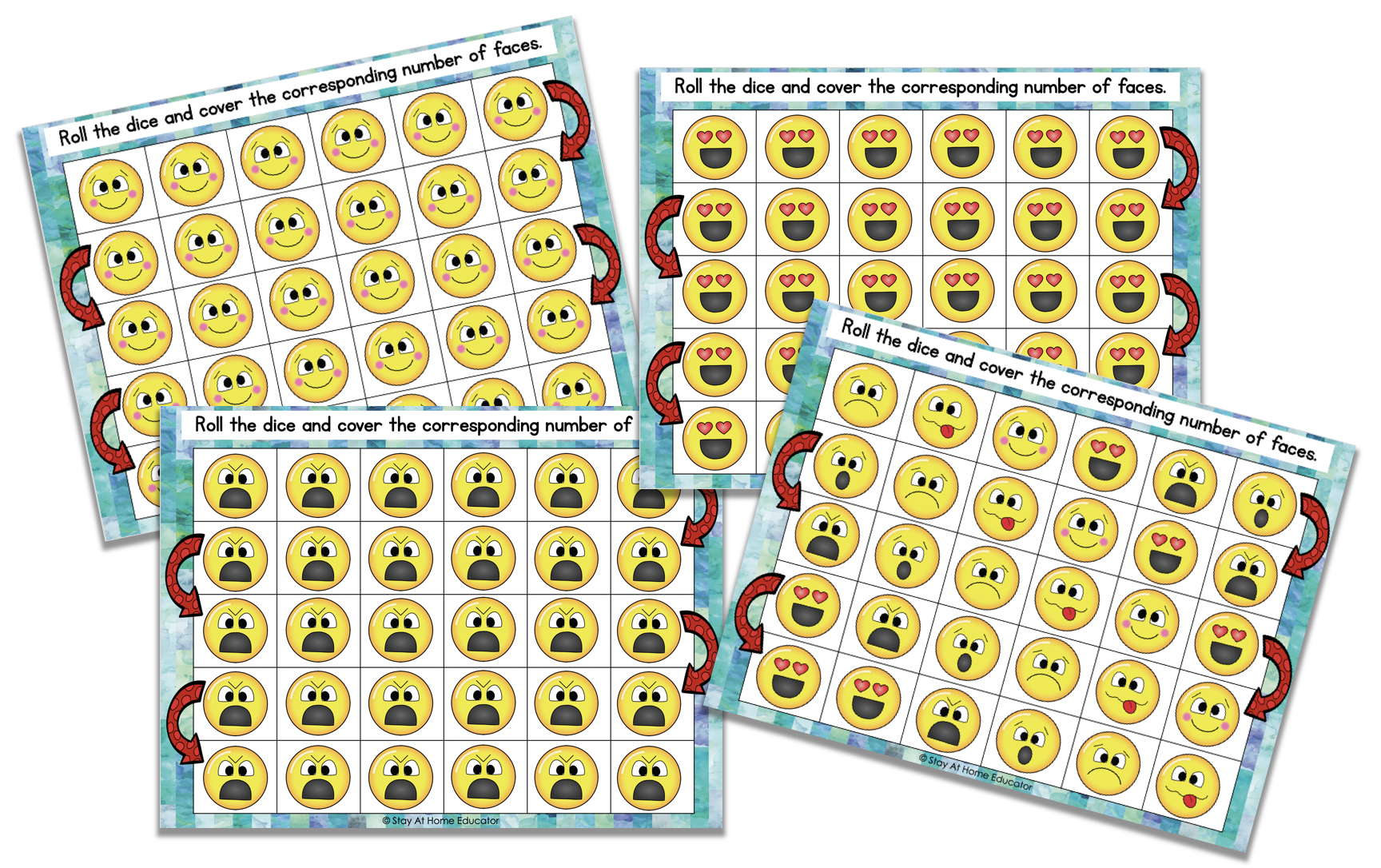
How to Use the Emoji Grid Games
The steps for completing the activity are simple. Invite your preschooler to roll a dice, identify the number rolled, and then cover the corresponding number of emojis on the grid game.
The grid games feature five different emoji faces, with one grid game featuring all five emojis on the same game. Depending on your goals in using these emoji games, you can pull out whichever grid you feel is best. Or, pull them all out at once!
Since each grid game features a different emotion, you can introduce specific feelings during circle time and use them in your emotions activities for preschoolers.
Invite your preschooler to roll a dice.
If your preschooler is new to counting and still struggles with one-to-one correspondence, then I suggest to stick with a 1-3 dice. If your preschooler can count fairly accurately and understands one-to-one correspondence, then offer a 1-6 dice. You can choose if you want to use a dot dice for this activity or if you want to use a numeral dice.
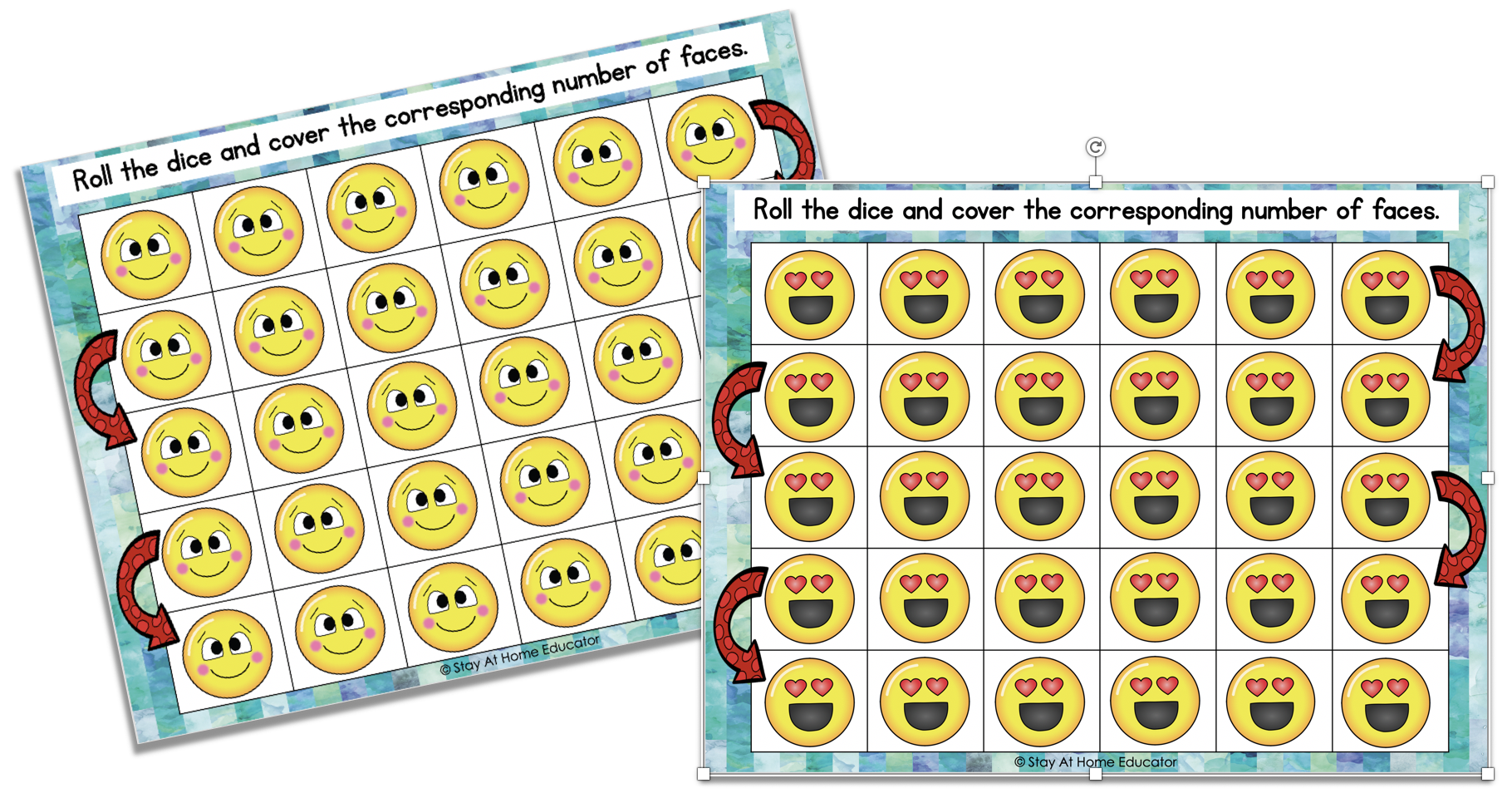
Related Reading
The grid games have arrows on each line, moving the preschooler along in a specific direction.
This is where the literacy piece comes in.
When we read, we follow a specific progression. The same is true for calculating math formulas.
The arrows on the grid games direct the preschooler as to the order in which the grid should be covered. That said, some preschoolers will struggle with this, so you can choose to make it a featured skill or to allow your preschooler to cover the emoji faces in any order they choose.
Identify the Number
After your preschooler has rolled the dice, identify the number and then place the corresponding number of counters on the mat. The mats that have a single emoji are used just for counting practice, but the mat with multiple emojis can be used to also identify the strong emotions and fun feelings while counting.
This is a fun way to incorporate extra knowledge and skills into an All About Me theme or a Friendship theme.
Don’t Forget Picture Books About Emotions
Any preschool activity can be amplified by having the right picture books. These are some picture books about feelings I have hand selected and use in my own preschool.
Be sure to read below for five more ways to use this printable!
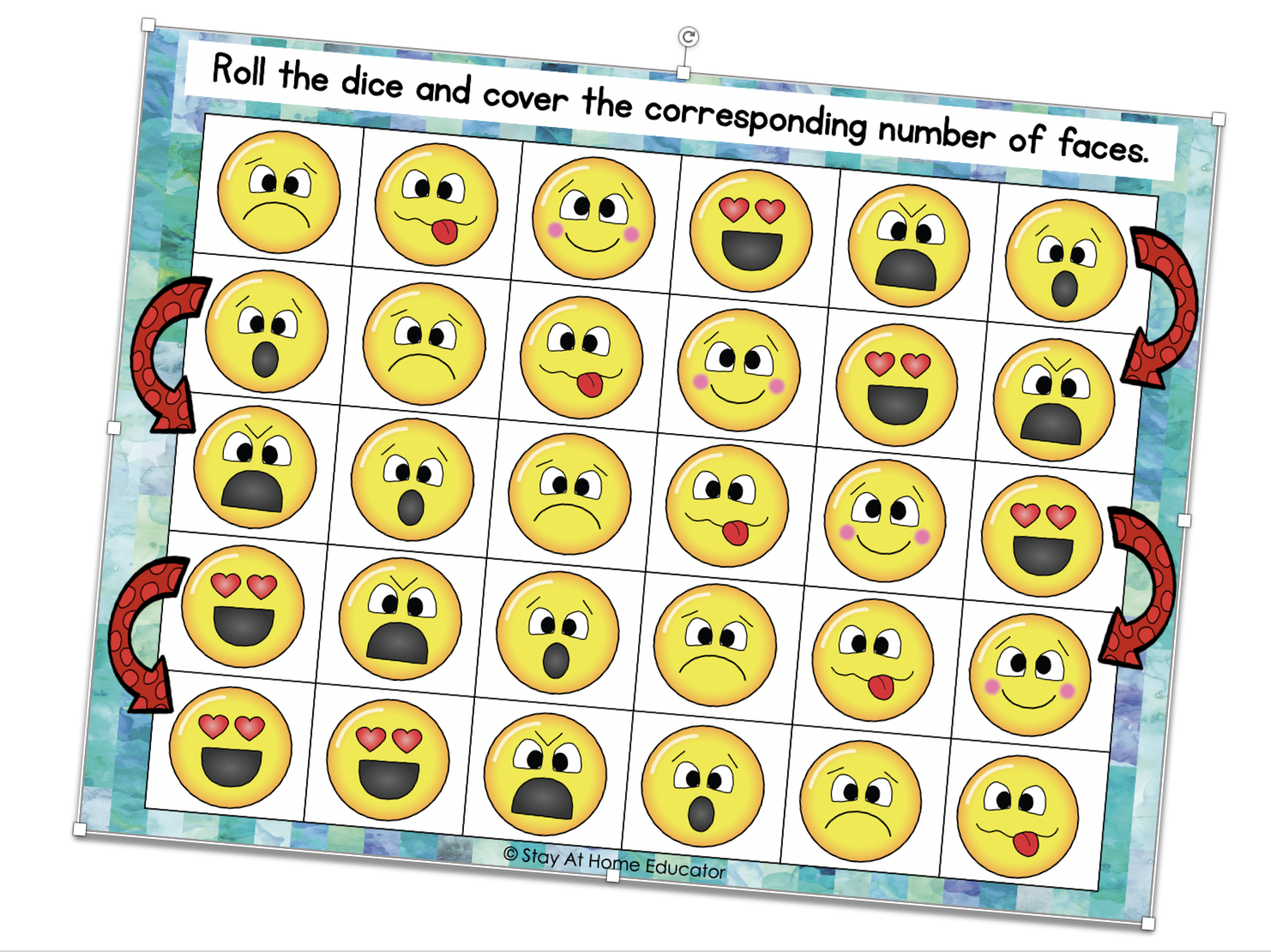
More Emoji Game Ideas Using this Printable
There are so many ways to use this freebie! Let me share some ideas with you.
- Use these grid games for small group learning and complete a single grid game together.
- Use the mats during circle time and invite preschoolers to describe the feeling for each emoji face.
- Take #2 up a notch and invite preschoolers to share times when they have felt a specific way.
- Or set out the mats for preschoolers to see. Describe a scenario and have preschoolers place a single counter on the mat that describes how they might feel.
- For children who struggle with one-to-one correspondence, have them use counting cards instead of dice.
How else would you use these Emoji Grid Games?
Grab Your Free Emoji Grid Games Below
Think these emoji grid games will be a fun way to teach social skills to preschoolers while also teaching numeracy skills? You bet they are! They even reinforce fine motor skills and could even extend to role playing activities.
But be sure to scroll down to find more activities for preschoolers!
Check Out These Activity Packs!
I like to use these activities in my math and literacy centers, but it’s also the perfect set of activities to keep my little boys busy and learning while I’m enjoying a little quiet time.
These activity packs are a great addition to your preschool lesson plans.

I’m Sarah, an educator turned stay-at-home-mama of five! I’m the owner and creator of Stay At Home Educator, a website about intentional teaching and purposeful learning in the early childhood years. I’ve taught a range of levels, from preschool to college and a little bit of everything in between. Right now my focus is teaching my children and running a preschool from my home. Credentials include: Bachelors in Art, Masters in Curriculum and Instruction.
